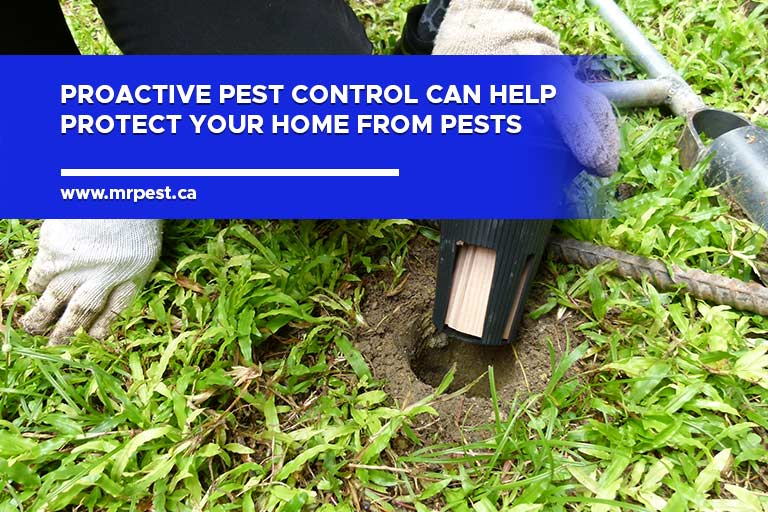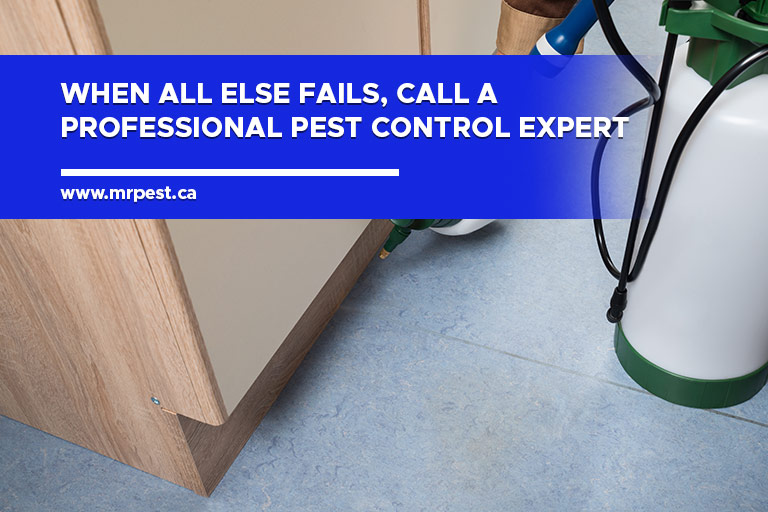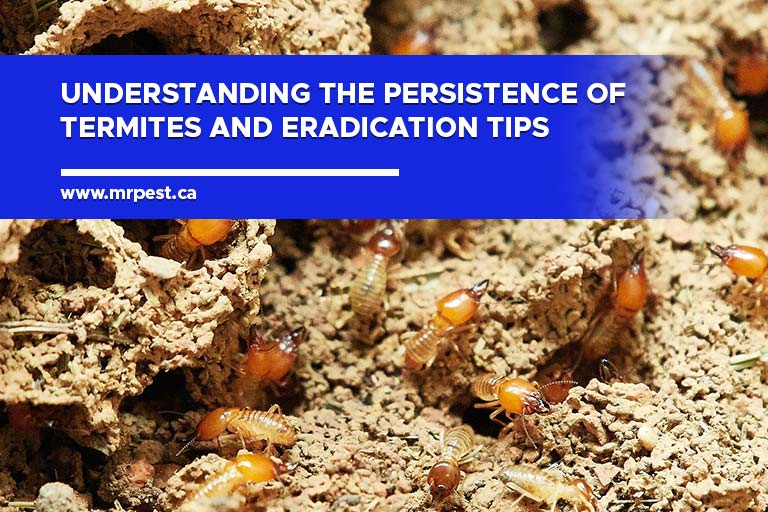Termites, those tiny yet formidable creatures, wield immense power to wreak havoc on homes, businesses, and ecosystems. Despite their diminutive size, termites pose significant challenges to eradication efforts due to their intricate behaviour patterns, resilient biology, and environmental adaptations.
Let us delve into the challenges in termite eradication and the strategies available to mitigate their destructive impact.
Unveiling Termite Behavior and Biology
Termites, often referred to as “silent destroyers,” thrive in dark, damp environments where they can feast on cellulose-rich materials like wood and paper. Understanding termite biology and lifecycle is essential to comprehend their tenacity. Termites live in highly organized colonies comprising workers, soldiers, and reproductive individuals. These colonies operate remarkably efficiently, continuously foraging for food and expanding their territories.
Termites exhibit fascinating behaviour patterns, including intricate communication systems through pheromones and vibrations. These behaviours facilitate coordinated efforts within the termite colony structure, allowing them to build elaborate nests and efficiently exploit food sources. The diversity of termite species further complicates eradication efforts, as different species may exhibit unique behaviours and nesting habits.
Termite Infestation Challenges
Termite infestations present significant challenges to homeowners and property managers, requiring proactive prevention measures, early detection strategies, and timely intervention to mitigate the impact on structures and finances.
-
Insidious Nature
Termite damage often occurs silently and unnoticed until significant structural deterioration has already taken place. Unlike other pests, termites can quietly consume wood and other cellulose-based materials without obvious signs of their presence, making detection challenging.
-
Economic Costs
The economic costs associated with termite remediation and repairs can be substantial. Property owners may face hefty bills for structural repairs and restoration efforts to address termite damage, leading to financial strain and loss of property value.
-
Prevention and Early Detection
Preventing termite infestations and detecting them early on are paramount challenges. Without proactive measures in place, termites can establish colonies and cause extensive damage before they are detected, necessitating costly interventions to mitigate the impact.
-
Structural Risks
Termite damage assessment reveals the extent of structural risks posed by infestations. From weakened foundations to compromised wooden structures, termites can compromise the integrity of buildings and infrastructure, posing safety hazards and requiring extensive repairs.
-
Timely Intervention
Addressing termite infestations promptly is crucial to prevent further damage and minimize financial losses. However, identifying and treating infestations promptly requires vigilance, expertise, and access to effective termite eradication methods.
Overall, termite infestations present significant challenges to homeowners and property managers, requiring proactive prevention measures, early detection strategies, and timely intervention to mitigate the impact on structures and finances.
Environmental Adaptations and Resistance Mechanisms
Termites have evolved to thrive in diverse environmental conditions, from tropical rainforests to arid deserts. Their ability to adapt to changing habitats and climates makes them formidable adversaries in eradication efforts. Environmental adaptations, such as moisture retention mechanisms and symbiotic relationships with microorganisms, contribute to termite resilience.
Furthermore, termites possess innate resistance mechanisms that enable them to withstand conventional eradication techniques. Over time, termite populations may develop immunity to certain chemicals, rendering traditional treatments less effective. Understanding these termite resistance mechanisms is critical to developing innovative approaches to pest control.
Exploring Termite Eradication Methods and Strategies

Traditional eradication methods, such as chemical treatments and fumigation, have been mainstays in pest control efforts. While these approaches can be effective, they may pose environmental risks and health concerns for humans and other organisms. Innovations in termite control have led to the development of alternative strategies.
-
Baiting Systems
Baiting systems are designed to disrupt termite foraging patterns and colony dynamics, ultimately leading to colony collapse. They offer a more targeted approach to termite control, utilizing slow-acting toxins that are ingested by termites. Once ingested, these toxins are spread throughout the colony, effectively targeting the entire population, including the queen and reproductive individuals.
-
Physical Barriers
Physical barriers create obstacles to termite entry and disrupt their foraging pathways, providing long-term protection against termite infestations and are often integrated into new construction projects as a preventive measure. Materials such as metal mesh and concrete foundations are used to create barriers that termites cannot penetrate, effectively preventing access to vulnerable structures.
-
Integrated Pest Management (IPM)
Integrated pest management approaches combine multiple strategies to address termite infestations comprehensively. It emphasizes the use of non-chemical control methods, such as habitat modification, moisture control, and exclusion techniques, alongside targeted pesticide applications. By integrating preventive measures with strategic eradication efforts, IPM aims to minimize environmental impact while effectively managing termite populations.
The Role of Termite Natural Predators and Ecological Balance
In nature, termites play a crucial role in ecosystem dynamics, serving as food sources for numerous predators and contributing to nutrient-cycling processes. Birds, reptiles, and other natural predators help regulate termite populations and maintain ecological balance. Preserving biodiversity and habitat integrity is essential to sustaining natural predator populations and mitigating termite infestations.
We can leverage natural predation as a sustainable solution to termite control by fostering healthy ecosystems and promoting habitat conservation. Creating habitat corridors and wildlife-friendly landscapes encourages the presence of natural predators, reducing reliance on chemical treatments and promoting environmental stewardship.
When to Call a Professional Pest Control

Recognizing the signs of a termite infestation and knowing when to seek professional assistance can make all the difference in mitigating damage and protecting your property. Here are some situations where calling a professional pest control service is advisable:
-
Visible Signs of Termite Activity
If you notice mud tubes along your home’s foundation, discarded termite wings, or hollow-sounding wood, it’s essential to seek professional assistance promptly. These visible signs often indicate an active termite infestation that requires immediate attention.
-
Unexplained Damage
Unexpected damage to wooden structures, flooring, or furniture without an apparent cause may signal a termite infestation. Professional pest control experts can conduct thorough inspections to identify the extent of the damage and recommend appropriate treatment options.
-
Preventive Measures
For homeowners seeking proactive termite prevention strategies, consulting with a professional pest control service can provide valuable insights and guidance. Pest control professionals can assess your property for potential vulnerabilities and recommend preventive measures to deter termite infestations.
-
Failed DIY Attempts
If previous attempts to address a termite infestation using DIY methods have proven unsuccessful, it’s time to enlist the expertise of a professional pest control service. Pest control professionals have access to specialized equipment, treatments, and techniques necessary to effectively eradicate termite colonies and prevent future infestations.
-
Real Estate Transactions
Before purchasing or selling a property, scheduling a termite inspection conducted by a professional pest control service is essential. Termite inspections provide peace of mind and protect buyers and sellers from potential liabilities associated with undisclosed termite infestations.
Investing in professional pest control services ensures thorough inspections, effective treatment options, and long-term protection against termite infestations. For expert termite eradication and pest control services in Alliston, contact us at 1-888-794-PEST. Let us help you protect your property and restore peace of mind.



